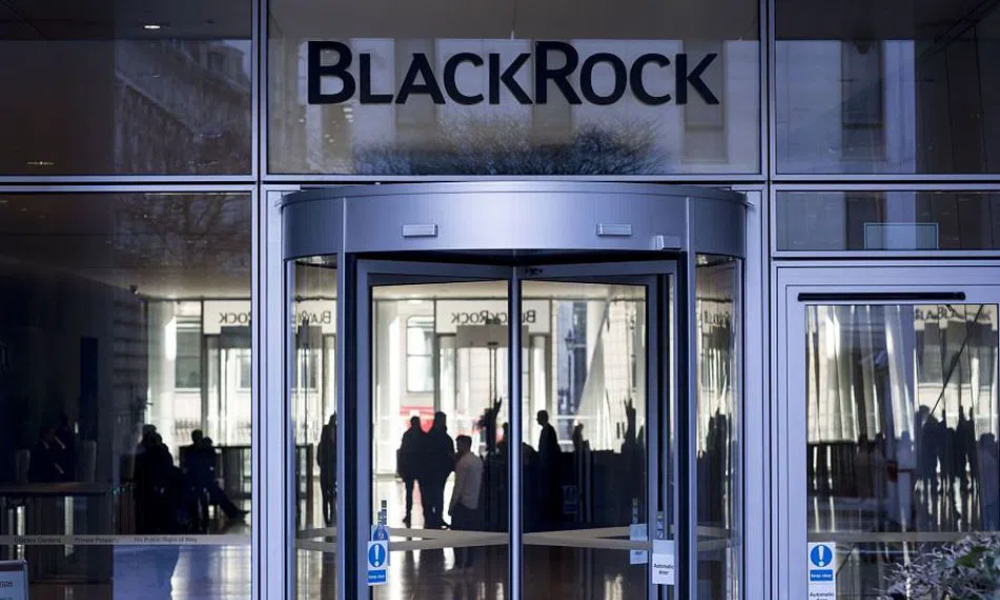BlackRock hails once-in-a-generation opportunity as advisor urges investors not to forget long-term goals

BlackRock anticipates a potential deluge of trillions of dollars into bond funds amid high yields and cooling inflation.
In an earnings call Friday, BlackRock president Rob Kapito pointed to roughly $7 trillion that’s currently parked in money-market funds, a considerable portion of which he expects investors to shift to bond funds. That is in addition to flows that would come from equity funds.
“We’re calling this a once-in-a-generation opportunity. There is finally income to be earned in the fixed-income market, and we are expecting a resurgence in demand,” Kapito said in response to an analyst question.
The trillions currently in money-market funds are “ready, when people feel that rates have peaked, to flood the fixed-income market — and we need to position ourselves to capture that,” Kapito said.
A report from the Bureau of Labor Statistics earlier this week showed that consumer prices were up 3% year over year in June, representing the lowest inflation rate in more than two years. That, advisors said, is an indication that the Fed’s interest-rate hikes to cool inflation are finally taking effect. The result also hints that further rate hikes this year may be minimal.
Currently, 80% of fixed-income assets have yields above 4%, Kapito said.
“Yields are back,” he said. “Most people think that yields are going to continue to rise … You can actually earn attractive yields without taking much duration or credit risk.”
In the second quarter, BlackRock’s fixed-income funds saw net inflows, led by demand for high-yield total return and municipal bond products, reflecting the opportunities for alpha that have not been seen in years, Kapito said.
But investors are also still demanding passive bond ETFs, with $68 billion flowing into the iShares products during the first half of the year, compared with $12 billion for BlackRock’s active fixed-income funds, he noted.
“We’re advising clients on new use cases for bond ETFs, such as replacing more expensive futures or swaps, as cash and liquidity instruments and as tools for large scale portfolio transitions,” he said.
ADVISOR REACTION
“With increased yields across fixed income, there is certainly an opportunity in the bond space as fund inflows help the appreciation side of total return,” Andrew Fincher, an advisor at VLP Financial Advisors, said in an email. “If a client was holding additional cash and wanted to add a little risk, we would certainly consider fixed income.”
However, there should not be a reactionary shift to bond funds that ignores the overall role of fixed income in a client’s portfolio, Fincher said.
“We allocate for long-term growth, and there’s still greater potential for growth in equities — fixed income is utilized for income distribution needs within the portfolio and to limit downside risk in a normal market cycle (unlike 2022),” he said. “While there are opportunities, we won’t be drastically altering the way we construct portfolios for clients.”
FUND FLOWS
Over the past six months, demand for fixed-income funds has shifted dramatically, with more than $147 billion going into U.S. mutual funds and ETFs in that category, data from Morningstar Direct show. That more than erases the $107.5 billion that bled from the category in the last six months of 2022.
By comparison, U.S. equity mutual funds and ETFs continued to bleed, with outflows of $68.3 billion this year through June, down from the $85.4 billion that poured out during the second half of 2022, according to the Morningstar data.
But the big winner over the past 12 months has been money-market funds, which raked in a total of $764.8 billion. Of that, $598.2 billion poured in during the first half of 2023, and $166.5 billion came during the second half of 2022.
SUSTAINABILITY MATTERS
Although he declined to say “ESG” during Friday’s call, in line with his shift away from the term in the current political environment, BlackRock CEO Larry Fink said he saw enormous potential in the global energy transition, calling it “one of the greatest opportunities in the world today.”
“There’s not a government that is not focused on this, especially for countries that are dependent on [importing] power,” Fink said.
The Inflation Reduction Act, which represents the biggest investment in efforts to combat climate change in U.S. history, is one sign of that, he noted.
“We look at this as a multi-year growth opportunity,” Fink said, citing BlackRock’s $700 million investment in Australian battery-storage firm Acacia Energy. Countries’ efforts around the energy transition amount to “tens and tens of trillions of dollars [of] market opportunity,” he said.
Public capital alone will be insufficient to meet the demands necessary to stem climate change, meaning that private assets will be well-positioned, one of the biggest opportunities for BlackRock, he noted.
Decarbonization projects, designed to remove carbon dioxide from the air, are part of that.
“We have deep and broad conversations with traditional energy companies and how are they going to be focused on sequestration of carbon. They own the geology,” Fink said. But “BlackRock already has one of the largest sequestration projects in the United States in Navigator CO2.”



